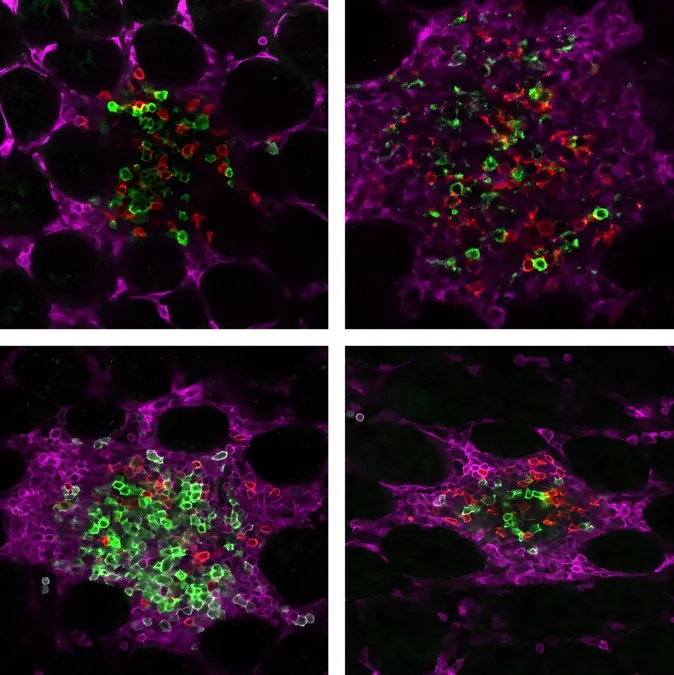
Identical Mice, Distinct Immune Systems: The Surprising Role of Gut Microbiota
2025-08-15
Author: John Tan
Unveiling the Mystery of Laboratory Mice
Laboratory mice, often viewed as the ultimate model of genetic uniformity—like identical twins—are proving to be more complex than scientists previously thought. Groundbreaking research from the Faculty of Science at Charles University reveals that while these mice share the same genetic makeup, their immune systems can vary significantly, thanks to their gut microbiota.
The Groundbreaking Findings
"We were astonished by how the absence of microbiota increased differences among our germ-free mice," states Jan Pačes, the lead author of the study from the Laboratory of Cell Immunology. "Those with normal gut microbiota were strikingly similar in contrast." The researchers utilized a fascinating "green mouse" model that enables the visualization of immune cells under a fluorescence microscope. This approach allowed them to create the first detailed mapping of gut-associated lymphoid tissues (GALT) such as Peyer's patches and mesenteric lymph nodes, across mice with varying microbial environments: conventional, germ-free, and those hosting a minimal defined microbiota.
The Implications of Gut Microbiota Diversity
Their discovery was clear—mice with a diverse microbiota displayed more uniform immune structures than their germ-free or minimally colonized counterparts. Germ-free mice showed dramatic variability in the size and shape of gut immune organs, highlighting the crucial role of gut bacteria in maintaining immune system consistency. While the minimal microbiota OMM12 improved gut morphology to some extent, it did not fully restore the number of immune cells or replicate the functional health found in conventionally microbiota-rich mice.
A New Discovery: The Immunovillus
Additionally, the team made a fascinating new discovery: a unique immune structure they named the immunovillus. Found primarily in mice with limited microbiota, this structure, packed with immune cells, may be an adaptation to specific microbial environments, shedding light on the dynamic interplay between gut flora and immune development.
Conclusion: A New Paradigm in Immunology
These findings challenge the long-held assumption that genetic similarity guarantees identical behaviors and functions, urging scientists to consider the profound impacts of gut microbiota on health and disease. As more research unfolds, this knowledge could lead to revolutionary advances in immunology and personalized medicine.





 Brasil (PT)
Brasil (PT)
 Canada (EN)
Canada (EN)
 Chile (ES)
Chile (ES)
 Česko (CS)
Česko (CS)
 대한민국 (KO)
대한민국 (KO)
 España (ES)
España (ES)
 France (FR)
France (FR)
 Hong Kong (EN)
Hong Kong (EN)
 Italia (IT)
Italia (IT)
 日本 (JA)
日本 (JA)
 Magyarország (HU)
Magyarország (HU)
 Norge (NO)
Norge (NO)
 Polska (PL)
Polska (PL)
 Schweiz (DE)
Schweiz (DE)
 Singapore (EN)
Singapore (EN)
 Sverige (SV)
Sverige (SV)
 Suomi (FI)
Suomi (FI)
 Türkiye (TR)
Türkiye (TR)
 الإمارات العربية المتحدة (AR)
الإمارات العربية المتحدة (AR)